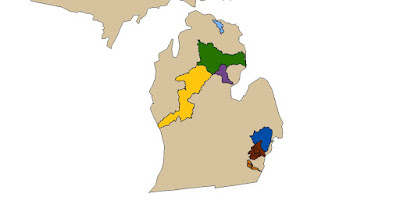To be honest, blog readers, the plan had been to post a blog before the month of May. Because May has been my busy travel month and I liked the idea of a pre- and post-travel blog. But as I am quickly learning during my Knauss fellowship year, time flies by extremely fast. You blink and suddenly you have been working at NOAA for almost four complete months, a third of your year over. And what a third it has been. I am in the midst of travel currently (attending the National Stock Assessment Workshop this week in California as part of my professional development plan), so I will think of this as a mid-travel blog and follow up in a month or so (after the bulk of my travel for the year is complete) to talk about these meetings I have been attending.
 |
| Fellow MISG Knauss Fellow Janet Hsiao and I took some time to check out the cherry blossoms on the Mall. Photo: Lisa Peterson |
I want to go a little bit more into what I am working on during my Knauss year, as now I have a much clearer picture of my specific projects. As I mentioned in my first blog post, I am working in the Office of Science and Technology with the Electronic Technologies Coordinator, Brett Alger. I’m working on a variety of projects, but I see myself as having two big ones. Both are related to electronic monitoring (EM — check out EM Explained here). The first is national standards. Throughout the year, I will be working with EM coordinators to think about standards, whether these be minimum requirements, policies, or just best practices, for the various components of EM systems (e.g. hardware, software, data files). My first task is to make recommendations for prioritization and timing and clarify the desired outcomes of creating these standards. Then the plan is to create a subgroup of the national Electronic Technologies Working Group to start working through the potential national standards components.
The other project I am working on combines my background in stock assessments with the EM work I am doing at NOAA. As electronic monitoring expands, special consideration needs to be taken with regards to how this new data is incorporated into the stock assessments that inform management. Some regions, like Alaska, are already incorporating EM into their stock assessments, while others, like the North East, are investing into research on how best to go about integrating their EM data. My goal for the year is to put together a document that synthesizes the current work that has been done on this topic, the progress being made by some of the researchers, and what some roadblocks may be, and potential paths forward. I’m hoping this will be useful to all the regions, no matter where they are in their EM programs.
This is shaping up to be a great year. I am learning a lot and am excited to continue my projects. In addition to the projects described above I am also helping with EM communications — check out this spotlight on the women of EM! I also do find time to explore D.C; see the pictures below!
The other project I am working on combines my background in stock assessments with the EM work I am doing at NOAA. As electronic monitoring expands, special consideration needs to be taken with regards to how this new data is incorporated into the stock assessments that inform management. Some regions, like Alaska, are already incorporating EM into their stock assessments, while others, like the North East, are investing into research on how best to go about integrating their EM data. My goal for the year is to put together a document that synthesizes the current work that has been done on this topic, the progress being made by some of the researchers, and what some roadblocks may be, and potential paths forward. I’m hoping this will be useful to all the regions, no matter where they are in their EM programs.
This is shaping up to be a great year. I am learning a lot and am excited to continue my projects. In addition to the projects described above I am also helping with EM communications — check out this spotlight on the women of EM! I also do find time to explore D.C; see the pictures below!
 |
| I am still trying to hit all the main buildings and museums in D.C., but I am always impressed by the Capitol Building. Photo: Lisa Peterson |
 |
| The beautiful cherry blossoms made for some cool pictures at the Washington Monument. Photo: Lisa Peterson |












